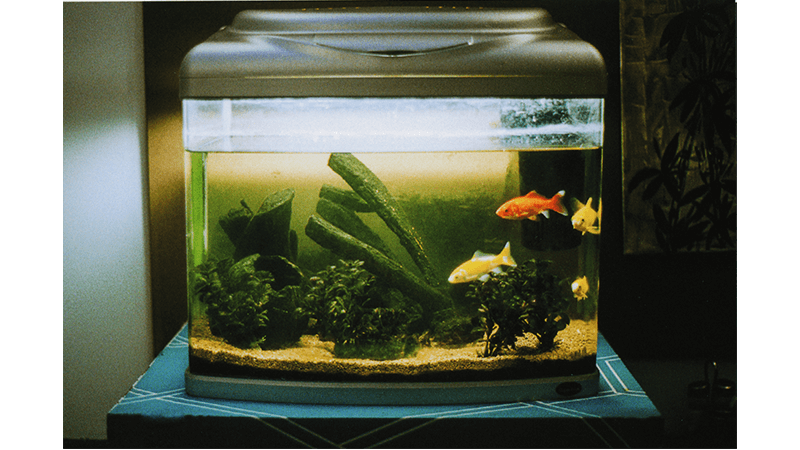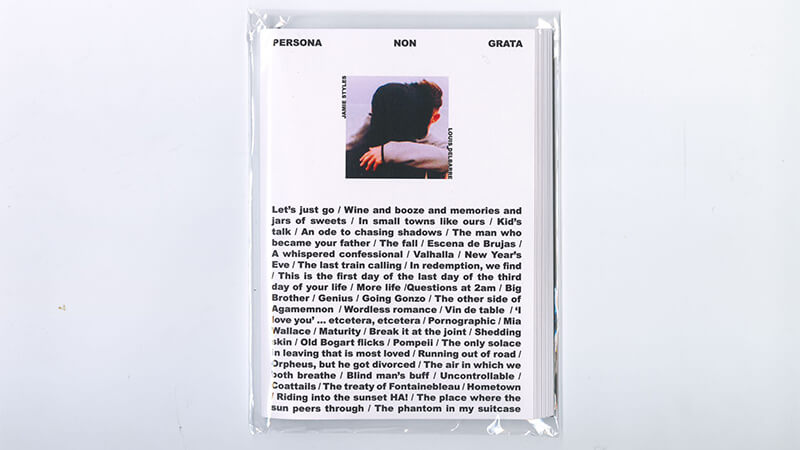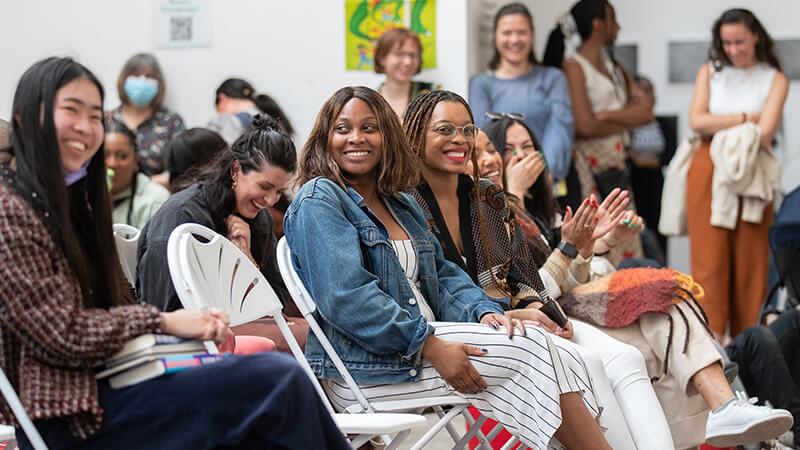“A Duality Of Dark & Light”: An Exclusive Extract From Flash Fiction Book Persona Non Grata
Persona Non Grata is a self-funded and self-published collaborative project involving three up-and-coming creatives in fiction, photography and design. Blending flash fiction and poetry, it follows one or multiple people whose lives are out of their control. Here, author Jamie Styles, designer and art director Carolina Semprucci and documentary photographer and photo editor Louis Delbarre share their inspirations behind the book, along with Persona Non Grata’s opening story, ‘Let’s Just Go’.

Let’s Just Go
He made her coffee. She took it black, with too much sugar. He would get up early and take it to her in bed. She’d wear this big white dressing gown while she had her cigarette. She’d sometimes have it hung on one shoulder or wrapped tightly around her. She’d look like Broadway, but feel like the Atacama. Her face bore a stare so distant that it went nowhere. He knew she was in the pit, and he only had a ball of string to drag her back out. He knew it wasn’t him. It wasn’t her job. She was an art director at a gallery in Soho. Her parents were rich, so she was too. She had it all, or so it seemed, but she only felt it in the scars of escape that marked her body. He used to get angry about it. He used to wish he could kill the person who stole the flame from that 13½-year-old child. But now he holds her hand and reads her Wendy Cope and plays her sweet homesick records and tries to sing along and dance till she smiles and grabs him. He holds her and feels her tears, and he loves her, so he hopes, he hopes he can save her. When he’s away, he writes her love letters from his exile in the room next door. Late one summer, he takes her to Vienna, and they quit their jobs and get new ones every week. They only do fun things because the rest is all wrong. I guess he told me they never knew, but maybe that was just another lie to add to the pile, too.
Meet The Creators Of Persona Non Grata
“The characters I write about are people who are outside of social norms; they’re the people that interest me most,” says author Jamie Styles. “We decided to open with this story because it encapsulates the feeling of the rest of the book. It’s called ‘Let’s Just Go’ because it’s such a casual thing to say, ‘let’s just go’, but most people wouldn’t have the money or the time to escape the so-called ‘rat race’. The characters are living in a dream world. Their dream is only possible as they can afford to escape societal norms. This echoes throughout the book – the feeling that freedom is restricted in our lives. Not just in a social sense, but in a full, deterministic sense.
“This escape won’t help her, and it’s naive of him to think it will. But at the same time, I wanted it to have a feeling of vulnerability: a woman clearly having lived a hard life; a man so in love that he tries to save her. He just wants her to be happy, and that’s something to admire, the humanity in it, even though the solution is naive and privileged. The entire work has this duality of dark and light, of romance and feeling.”
The book’s photographic aspect was the work of Louis Delbarre, who met and started collaborating with Styles while the pair were studying journalism.
“I have been taking pictures for 10 years now,” says Delbarre. “This photo (above) was taken early on, about the time when you go out for the first time without your parents standing over you. I went to this horrible Chinese restaurant with some friends. I didn’t like them, but they were the only people available back then. I was not paying attention to the conversation, but I remember staring at this fish tank at the back of the restaurant. It was a little window of hope somewhere in this boring Chinese restaurant with people I didn’t like. Then, when I read Persona Non Grata, the same feeling of disillusionment shone through. The feeling that you want to be somewhere else, with other people. Feeling like you’re missing out on the moment, missing out on the conversation, missing out on life.”
After taking more photos, Styles and Delbarre started to compile the work into a collection, arranging it so that a reader could read each piece singularly or as a collective ongoing narrative. The last collaborator was London-based Carolina Semprucci, who provided the book’s art direction.

“Making a book is a lot of trial and error,” she says. “Initially, it is instinctual, gradually and almost imperceptibly moving things around until it ‘clicks’. Visually curating the conversation between [Styles’ and Delbarre’s] works was initially entirely instinctual – creating the links and pairing different bodies of work based on how those made me feel and, as I imagined, could make other people feel.
“I chose to bind the book using elastic bands, reflecting the themes of fragility and evolution I felt throughout the book. Similarly, I wanted it to represent vulnerability in sharing art. It should feel easy to open, instead of stiff, to reflect the unfiltered feeling of the art. If, initially, making a book is based on feeling, in the end, it’s all about feelings. Seeing how people react to the work and what those connections bring up was always exciting and extremely rewarding, especially when you can make people feel something.”




